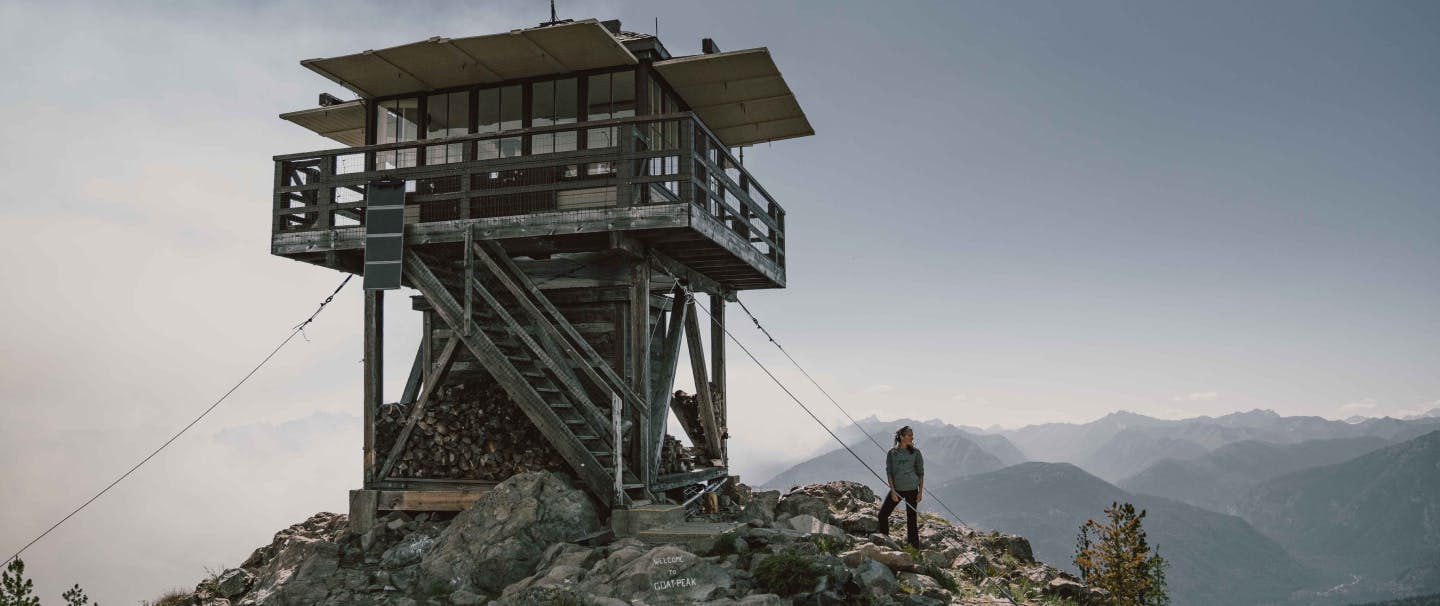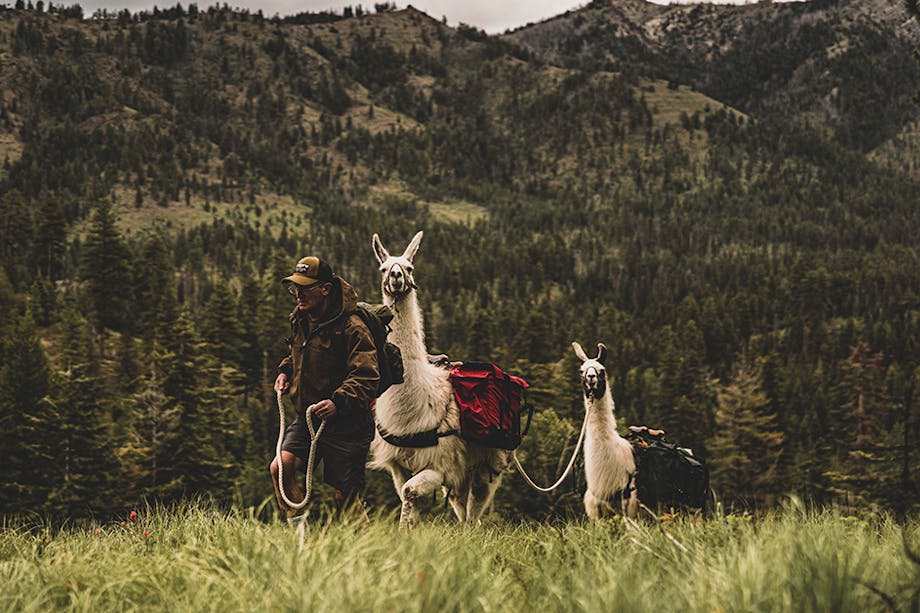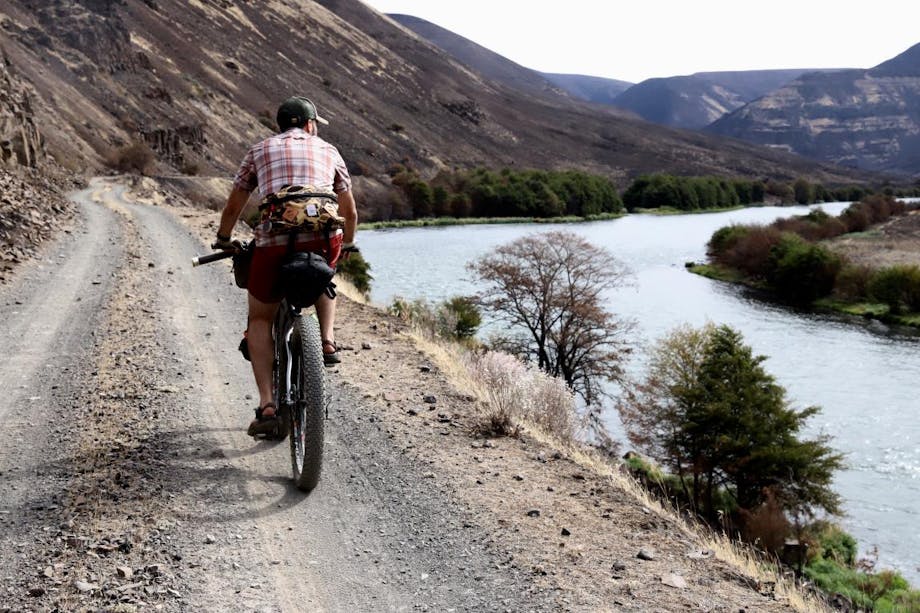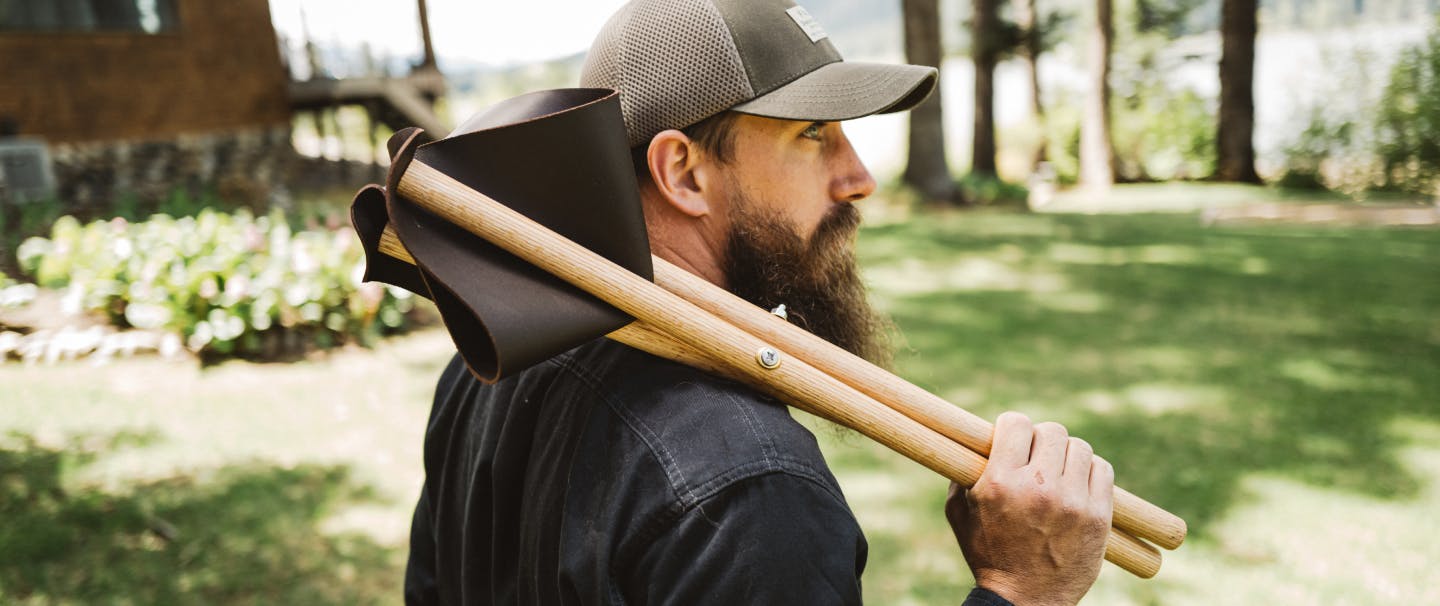I raced up the short but steep trail to the Goat Peak fire lookout, my legs burning and heart pounding. It was near midnight as I crested the ridge, the lookout barely a half mile away. In the darkness, I saw an unmistakable orange glow on the mountain across from me.
I ran to unlock the lookout, my adrenaline racing. This was my first season as a volunteer fire lookout, and only eight days earlier I had opened Goat Peak for the first time in six years.
Once inside, I fumbled with my lantern and took a few deep breaths. I’d spent so many years exploring the backcountry of this area and poring over maps that I knew exactly where the fire was, but even so, I had to be sure. I swiveled the old fire finder, an alidade created in 1915 for locating smoke and fires, and lined up the fire in the crosshairs.
It pointed right at Driveway Butte. There in the darkness I called the Methow Valley Ranger District and reported my very first fire. They would send in the North Cascades Smokejumpers at first light for an initial attack.
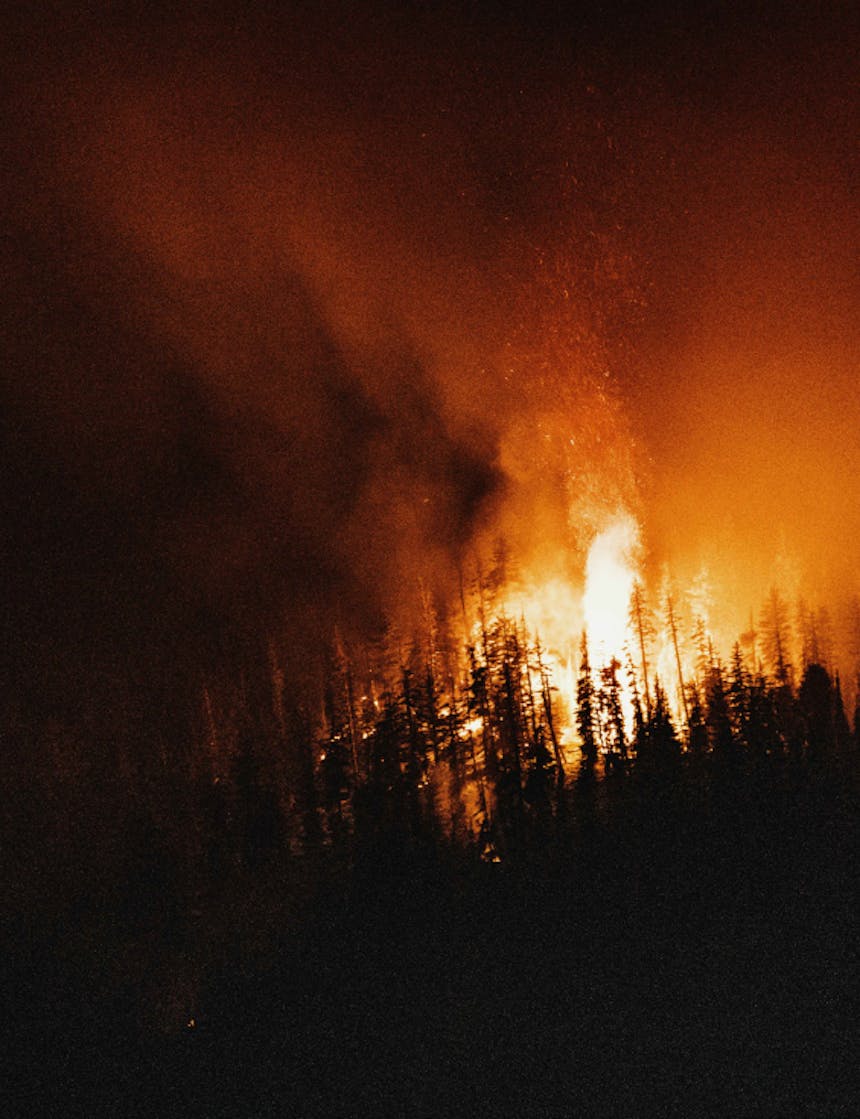
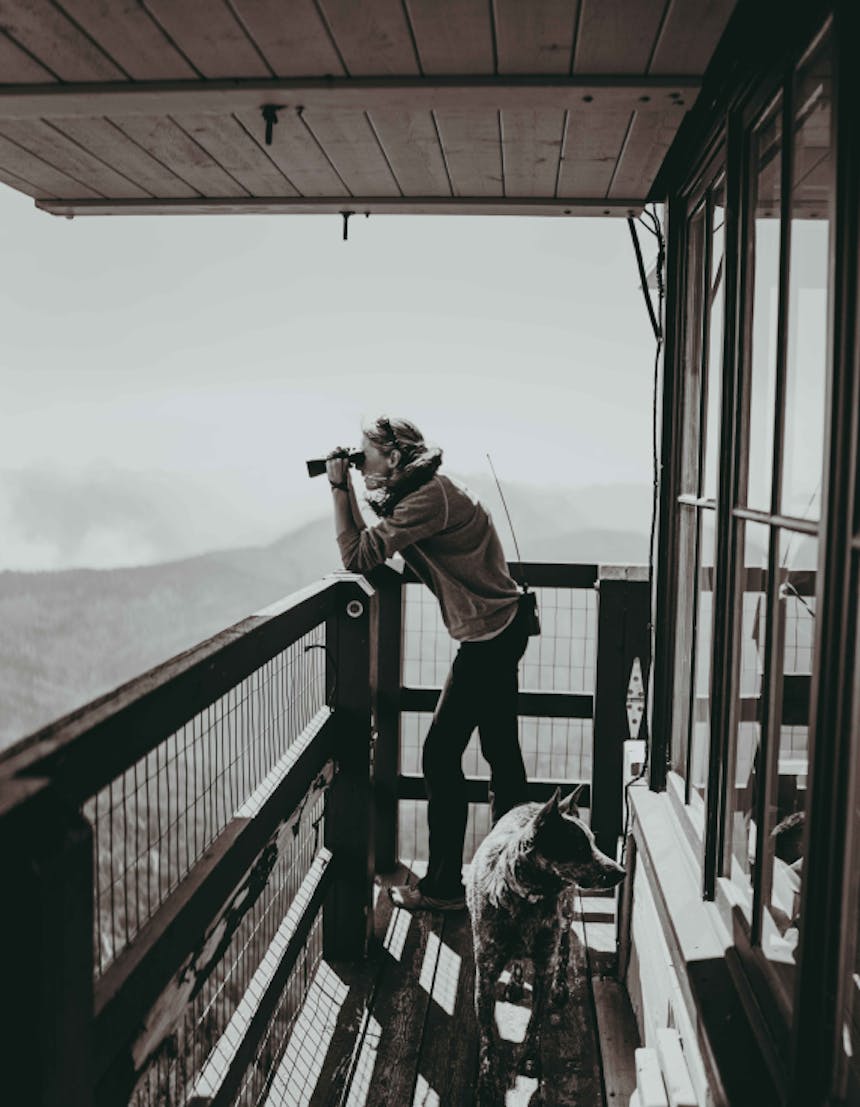
I sat down, my heart still pumping, and looked across at the fire through my binoculars. It was only five miles away as the crow flies. “What if it takes off? Grows larger?” I asked myself. Thankfully, it didn’t. It glowed small and steady, but with a life of its own.
For now, there was nothing more I could do. I couldn’t sleep. I kept looking for new fires and watching the existing one until first light, feeling a mix of awe, excitement, and fear.
“The plane slowly circled several times, and then I saw the jumpers’ bright orange parachutes as they expertly landed near the fire below.”
At 7,000 ft. in the North Cascades in July, dawn comes early, and the orange glow of the fire slowly disappeared with the growing light of day. Soon nothing was left but a tiny wisp of white smoke, which then disappeared completely.
I called the Fire District and told them I knew the fire was there, but the smoke had disappeared. They assured me the jumpers were coming and had a 30-minute ETA. Within minutes, I heard the unmistakable sound of the approaching smokejumper plane.
I ran outside to the catwalk just as they flew over and waved. But my excitement quickly turned to panic. The fire that had been so visible overnight and in the morning was inconspicuous. This was my very first fire report. What if they didn’t find it?
“Goat Peak Lookout, this is Jump 9,” the radio crackled.
I bolted upright. The smokejumpers were trying to reach me! I fumbled with my radio.
“Jump 9, this is Goat Peak.”
I confirmed the location of the fire before adding that I knew it was there but the smoke column had gone to sleep. Their plane circled low over Driveway Butte, and I held my breath.
After a long couple of minutes, the radio silence broke. “This is Jump 9. We see the fire.”
The plane slowly circled several times, and then I saw the jumpers’ bright orange parachutes as they expertly landed near the fire below. I watched them through the binoculars, fascinated. As I lowered the binoculars, I saw another small white column of smoke, in a new location just to the south.

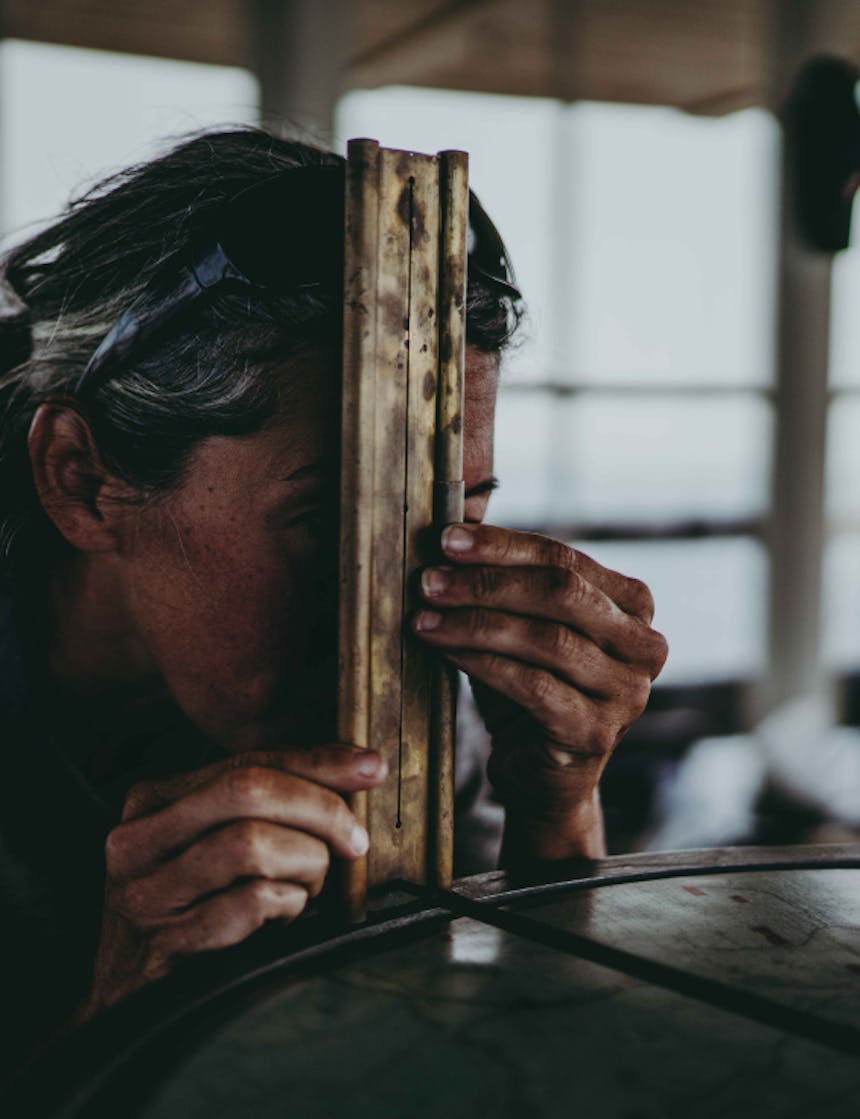
Another fire.
I lined it up in the fire finder and called in the location. I was in the middle of a lot more action than I’d ever anticipated.
On the evening of July 7, I’d hiked down to town for a resupply, missing an unexpected lightning storm the next day. Mazama and the nearby Highway 20 corridor received hundreds of lightning strikes.
In the next few days, I would witness the Varden, Cedar Creek, and Delancy fires taking hold, as well as Cub Creek 2. In an area where mountains can create challenges for communication, I would pass along information about changing fire or weather conditions to fire crews or relay information to backcountry Forest Service teams. I watched helicopters, fire bosses, heavy tankers, smokejumpers and rappelers. I even watched a helicopter land on the summit of Goat to install radio repeaters.
I also doubled as a public information officer. Before the fires, I helped many learn more about the surrounding mountains, valleys, and wildlife. During the fires, I chatted with many Methow Valley locals, who hiked up to visit, see the fire activity, and talk about what was happening.
I’ve always been an advocate for staffing fire lookouts, and this experience has convinced me even more that technology can never replace a person sitting high atop these historic structures. Fire lookouts are not only used for early fire detection, but also for communication as well as building a deeper connection to both the surrounding nature and the local community.
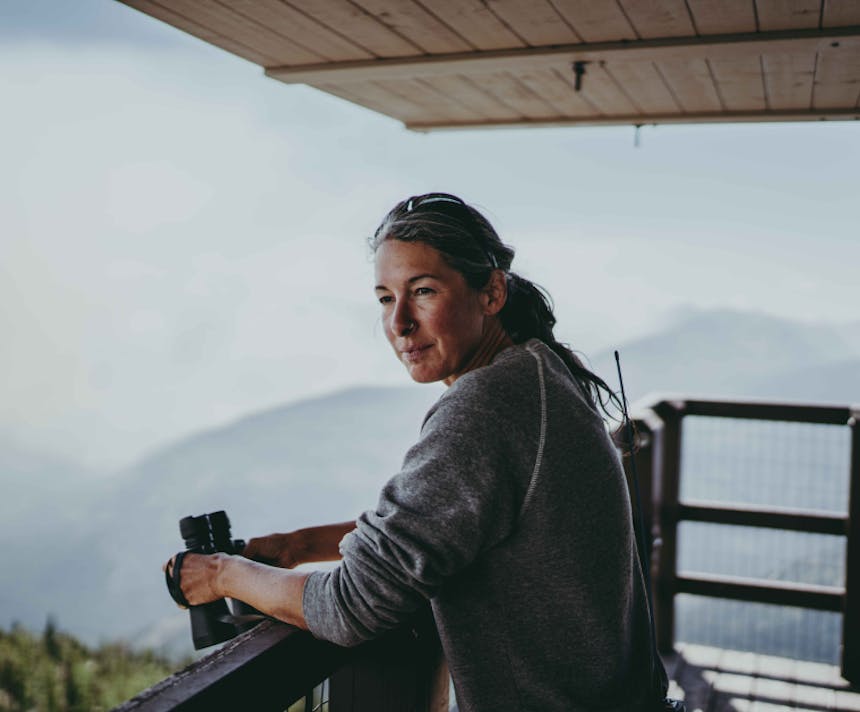
“I traveled to every corner of the state and visited 93 fire lookouts, tallying nearly 20,000 miles of driving, over 500 miles of hiking and biking, and nearly 140,000 feet of climbing.“
At 7,000 ft. in the North Cascades, the fire lookout on prominent Goat Peak is perched high above the tiny mountain town of Mazama in North Central Washington’s beautiful Methow Valley. Goat is one of Washington’s most famous fire lookouts. Its short but steep 1.5 mile approach and lofty views draw large crowds of both locals and visitors.
For 20 years, Goat was staffed by the equally famous “Lightning” Bill Austin. In 2015, Bill moved to Leecher lookout outside Twisp, and Goat has mostly been shuttered.
As a peak-bagging, history, and outdoor geek, I’ve long been interested in fire lookouts. Most sit atop prominent mountains with panoramic views. Once I started to explore the history of lookouts, I met many in the community eager to share the stories and history of these fantastic structures. While living in the Methow Valley back in 2014, I learned that Okanogan County has the highest number of fire lookouts still remaining in the state, and the Methow Valley Ranger District is home to eight of those.
That year I made a goal to visit all of the Methow Valley fire lookouts. It didn’t take long for my ambitions to grow. In 2017, I committed to seeing and photographing all of the remaining 93 standing fire lookouts across Washington State. Between 2017 and 2019, I traveled to every corner of the state and visited all 93 fire lookouts, tallying nearly 20,000 miles of driving, over 500 miles of hiking and biking, and nearly 140,000 feet of climbing.

I also befriended many people in the lookout community. Some are volunteer lookouts, some are paid lookouts; all have dedicated time and energy to maintaining these beautiful historic structures. The more I traveled, the more the journey became less about checking off a list and more about understanding and capturing a piece of American history.
When I moved back to the Methow Valley in 2019, I met Michael Liu, the retired Methow Valley District Ranger, who also had a deep love of fire lookouts. We began working with the local Ranger District to plan for and complete much-needed maintenance on several lookouts in the Methow. It was through my relationship with Mike that I was offered a volunteer position at Goat for the season—an opportunity I couldn’t turn down!
I unlocked the door to Goat on July 1, uncertain what to expect. I’ve always loved observing, watching, and sharing my passion for the outdoors with others. I’ve also always been a person who can never sit still. Would I go crazy in a fire lookout for the summer? Would I be bored?
Within 24 hours, I knew I had found something special. Here at a fire lookout I could engage all my senses. I had an intimate perch to watch the weather and mountains and to simply observe.


During my first week at Goat Peak, I enjoyed stunning sunrises, beautiful sunsets—and hundreds of visitors, who asked about lookouts, their history, and especially the fire finder. They asked what mountains they were looking at, what valleys, and what landmarks. I had a visit from a gentleman who staffed a fire lookout in the 1960s and said it had changed his life. I met a local Mazama family celebrating their twentieth year of hiking up to Goat Peak. Another local family brought up their two daughters, who drew me beautiful artwork of Goat Peak.

During the fires, locals brought up supplies, food and gifts. I was overwhelmed with gratitude to see the central role Goat Peak played in the community. On July 19, due to fire activity on both sides of the fire lookout, I had to cut my duty short. I hope to return this season to watch over the place I call home and the community and surrounding country that I’ve gotten to know more intimately than I ever imagined.
